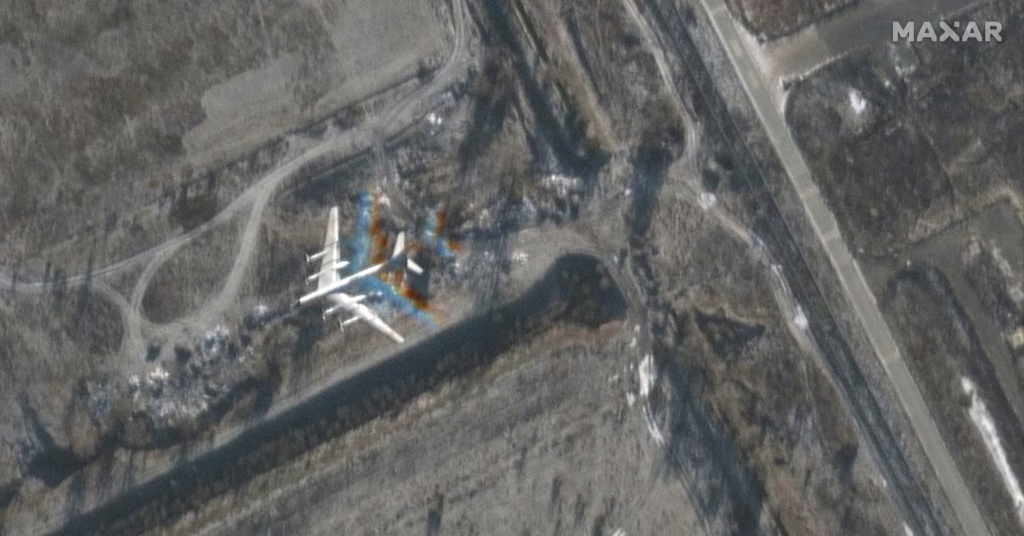The ongoing conflict in Ukraine, triggered by Russia’s invasion in February 2022, has left devastating impacts on civilian infrastructure, including the country’s aviation sector.
Prime Minister Denys Shmyhal’s recent statement highlights that 15 out of Ukraine’s 20 civilian airports have suffered damage. This has not only paralyzed domestic and international air travel but also added layers of difficulty for Ukrainians seeking to leave the country.
The closure of Ukraine’s airspace since the beginning of the war has forced its citizens to undertake arduous journeys through neighboring countries to access flights, further straining an already beleaguered nation.
The Destruction of Ukraine’s Civil Aviation Infrastructure
Before the war, Ukraine’s network of 20 civilian airports served as vital hubs for economic development, tourism, and connectivity. These airports facilitated millions of passengers annually and played a crucial role in linking Ukraine with the global economy.
However, since the invasion, strategic bombings have targeted critical infrastructure, aiming to cripple Ukraine’s logistical capabilities and weaken its economy. Among the damaged airports are key facilities in cities like Kyiv, Kharkiv, and Odesa, which once connected Ukraine to major international destinations.
Read : Ukraine Flag Appears on Big Screen During Putin Visit to Kazakhstan: Watch
The damage extends beyond mere structural losses. These airports represent more than just physical buildings; they are symbols of connectivity and progress. Their destruction disrupts not only travel but also trade, medical transport, and humanitarian aid efforts.
Read : Nearly 2,000 Children Killed in Ongoing Russia-Ukraine War: UNICEF
Prime Minister Shmyhal noted that the government has conducted risk assessments to explore the possibility of reopening some airspace. However, security concerns remain paramount. Even with reinforced air defense systems, the ongoing missile strikes pose a significant threat, making any near-term reopening a challenging prospect.
Navigating the Complexities of Reopening Airspace
The Ukrainian government faces a delicate balancing act. While there is a clear need to restore air travel for both economic and humanitarian reasons, safety considerations are non-negotiable.
The ongoing war means that any aircraft in Ukrainian airspace could become a target. Shmyhal’s comments reflect this reality, emphasizing that the security situation and military dynamics will dictate any decision to partially reopen the skies.

Efforts to assess and mitigate these risks are underway. Collaborations with international aviation authorities and defense partners aim to create conditions under which limited flights could resume safely. One potential candidate for reopening is the airport in Lviv, located in western Ukraine.
This region has been relatively less affected by direct conflict, and its proximity to European borders makes it a strategic choice. However, significant hurdles remain. The political and security landscape will need to stabilize before any concrete steps can be taken.
International partners, including aviation safety organizations and insurers, play a crucial role in these deliberations. Reopening an airport in a conflict zone is unprecedented, and the associated risks are high.
Insurance companies, for instance, would need to assess the viability of covering flights to and from Ukraine. Without such coverage, commercial airlines are unlikely to resume operations, no matter how much demand exists.
Broader Impacts on Ukraine’s Economy and Society
The closure of airports has profound implications beyond the travel sector. For a country already facing economic devastation, the inability to use air travel for commerce and tourism is a significant blow. Exporting goods becomes more challenging, and attracting foreign investment is nearly impossible without functional transportation infrastructure.

The damage to port infrastructure, mentioned by Shmyhal, compounds these challenges. With nearly 60 attacks on ports in the last three months alone, Ukraine’s ability to maintain its role as a key player in global grain markets has been severely undermined.
On a human level, the impact is equally severe. Ukrainians seeking to flee the conflict or travel abroad for work or medical reasons must endure long, arduous journeys.
Those in eastern regions face particularly grueling trips, often taking a full day just to reach the border. This not only adds to the emotional and physical strain but also creates logistical challenges for aid organizations and governments assisting refugees.
The damage to airports also has a psychological dimension. Airports are symbols of connectivity and hope. Their destruction is a stark reminder of the war’s impact on everyday life and the sense of isolation that many Ukrainians feel. Reopening even one airport would have a symbolic significance, representing a step toward normalcy and resilience.

The war in Ukraine has inflicted severe damage on the country’s civilian aviation infrastructure, with 15 out of 20 airports affected. This destruction has far-reaching consequences, disrupting travel, commerce, and humanitarian efforts.
While the Ukrainian government is exploring the possibility of reopening some airspace, significant security and logistical challenges remain. The potential reopening of Lviv’s airport offers a glimmer of hope, but it is contingent on a stable security environment and the support of international partners.
For Ukraine, restoring its aviation sector is not just about rebuilding airports. It is about reconnecting with the world, rebuilding the economy, and offering hope to its citizens.
As the conflict continues, the road to recovery will be long and arduous. But the resilience and determination of the Ukrainian people remain strong, and the reopening of even one airport would be a powerful symbol of their unwavering spirit.
let’s enjoy few years on earth with peace and happiness….✍🏼🙏

